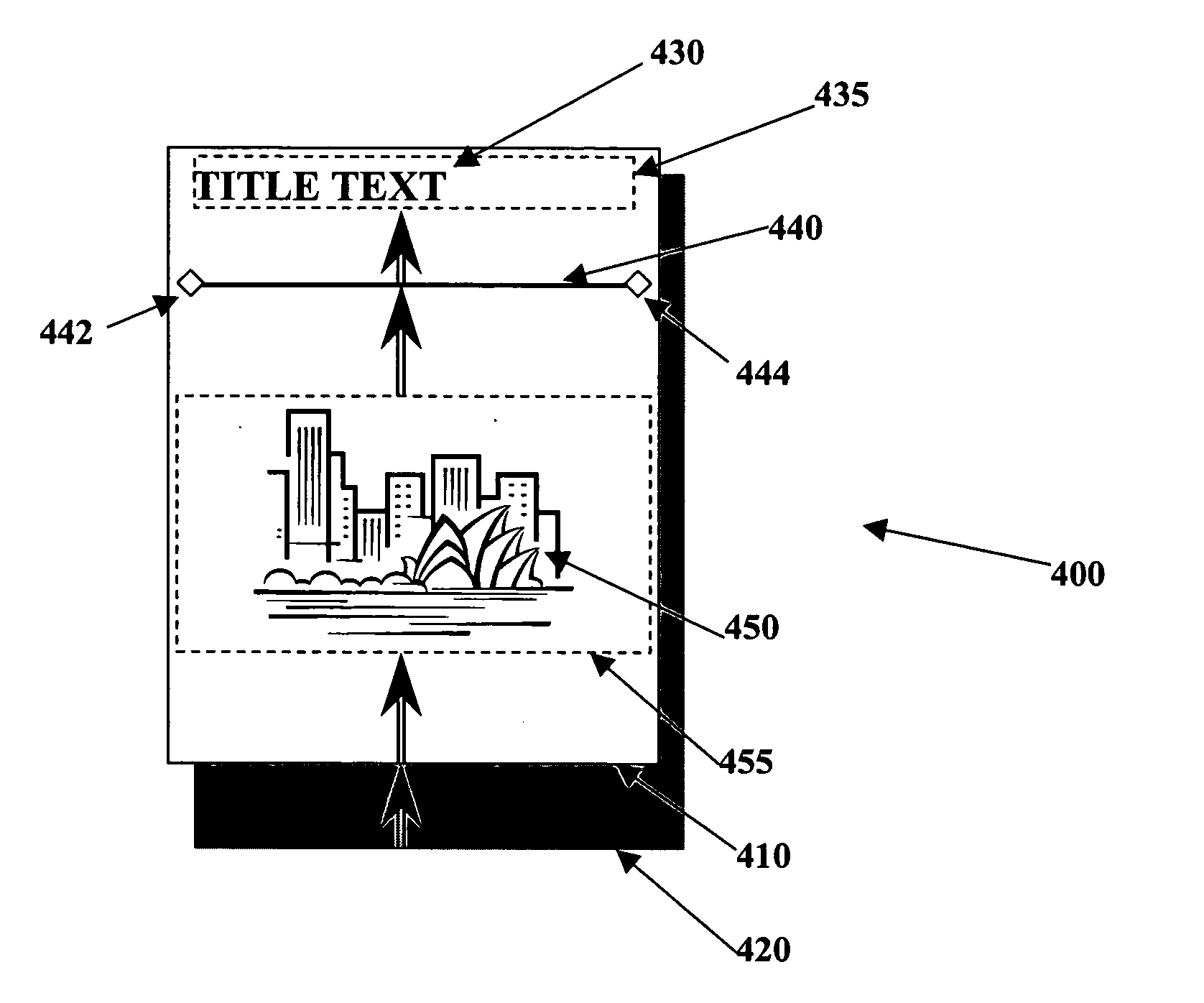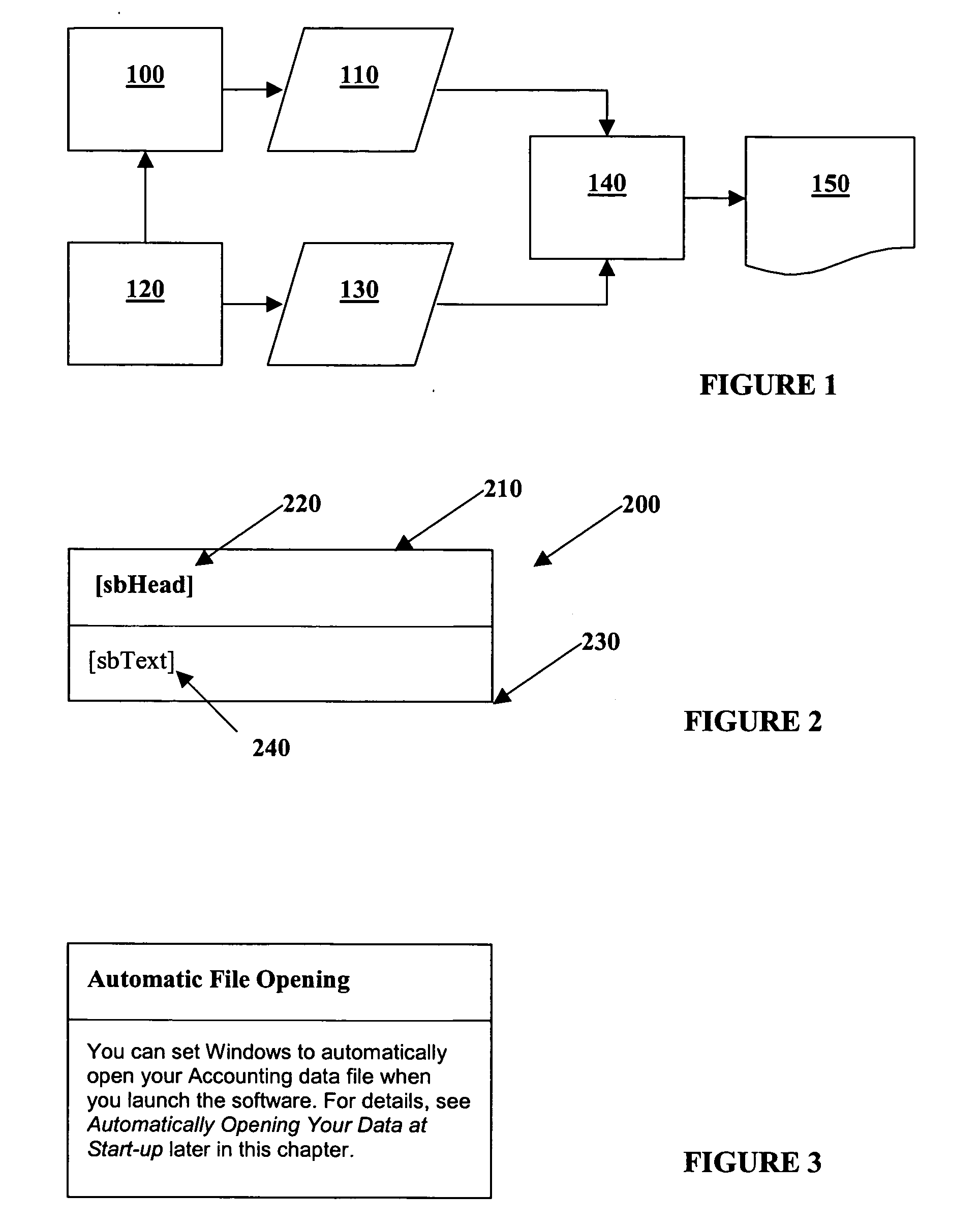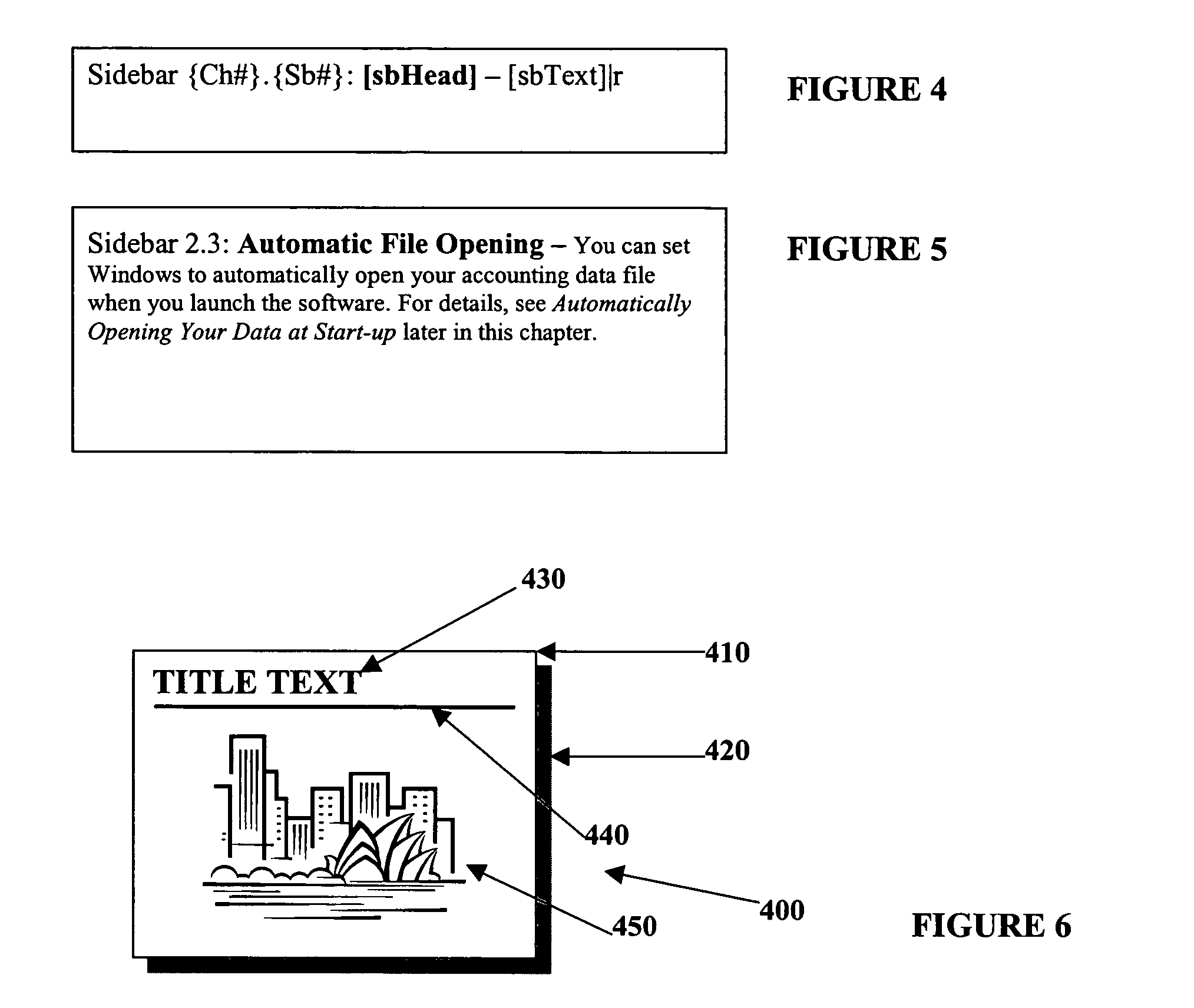The process is a manually-intensive one, with scope for error and misunderstanding.
A typical work such as a reference book containing several hundred pages may have a fairly complex
layout including sidebars, drawings, photographs, graphs and tables, and may take an operator from several weeks to several months to prepare manually.
These systems are primarily focused on high-speed large volume
data processing and have always been limited in their graphical sophistication.
They are not suitable for high-quality commercial publishing applications.
These systems are limited to highly structured data and have limited ability to deal with any variability in data length or appearance.
These systems have
limited capacity to resolve complex conflicting positional requirements.
However, there are drawbacks to these systems.
A full
layout can only be achieved if the intended result is relatively basic or with very significant programmatic development.
More complex layouts can be achieved by skilled programmers, but each new design typically requires extensive additional development to accommodate features that are unique to that design.
These limitations often render the scripting or programmatic method to be uneconomical when compared to the manual process, which it is intended to replace.
However, creating a template for a book that will be commercially-attractive can take up to several months of intensive development.
There have been attempts to include a
graphical user interface in these systems, but the complexity of the code structure makes the interaction with the interface limited in its functionality.
The time and cost involved in developing a new specification for a complex template imbues the systems with a level of complexity that makes them inaccessible to the general
graphic design and publishing market.
The templates that are created for these systems are generally economically non-viable for one-off publications such as a unique book format with a short print run, and are difficult to adjust to the requirements of highly variable content.
These systems are also very expensive, both in terms of
software and the cost of training operators, and provide no significant cross-media functionality.
Some publishing systems began to support SGML often in a limited fashion and generally with disappointing results.
The major drawback of SGML is its enormous complexity and the extent of the structures it tries to
encode.
HTML is extremely limited in its capacity to support the structural requirements of complex documents and visual structures.
XML and its derivatives have begun to drive a range of publishing systems but do not yet feature the graphical complexity and ease of use that would ensure its robust acceptance in the market.
XSL-FO is not yet able to provide the graphical sophistication required by most professional print and online publishers.
This is not ordinarily possible with other online formats, such as
HTML, where the
display device interprets certain formatting options to achieve a desired effect rather than rendering them in their original absolute form.
There may be occasions where the DTD or schema used to specify the content
data set is essentially incompatible with a selected template chosen for formatting the output.
In prior art layout systems and methods, the individual elements described above would generally be created and placed manually, resulting in a time-consuming and labour-intensive process.
This is in contrast to the earlier rule described for FIG. 8a which allows for weighting and some deviation from the ideal position, but reduces the scoring of a layout for greater deviations.
This may cause the resetting of elements and the repositioning of them on the page.
This can result in an enormous number of calculations being required before a particular layout is chosen.
However, in practical terms, the vast majority of possible layouts created using such a scheme will
score very poorly and so be rejected.
In most cases, it will not be possible to place all elements in the position dictated by a
single rule, so certain elements will score well, and others will score poorly.
In some instances elements that were initially included in the potential layouts may be dropped from the page design by the engine due to the conditions of their original inclusion no longer being valid.
The post-production may in turn adversely effect the layout of page due to, for example, a conflict between a table-of-contents frame and the main text and so may trigger a subsequent complete layout of the pages once more to resolve this conflict.
 Login to View More
Login to View More  Login to View More
Login to View More 


